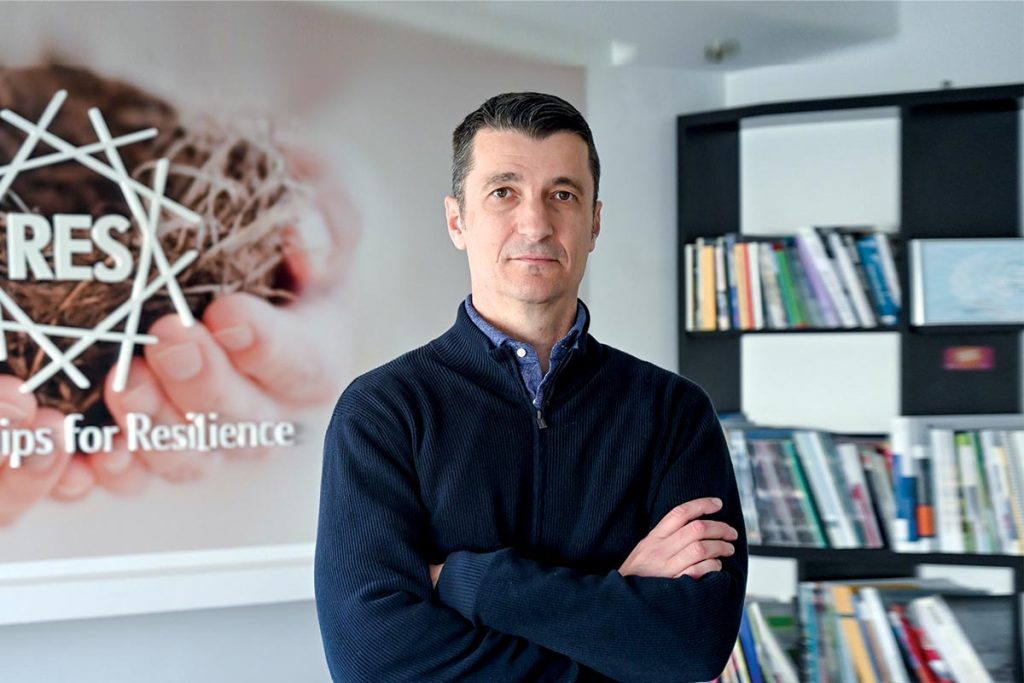
It seems as though the current incentive programmes for increasing energy efficiency completely overlook the poorest citizens and only benefit groups of residents who could largely afford to make such investments by themselves
We’ve taken some steps in Serbia that lead towards the introducing of energy efficiency, but the real challenges still lie ahead for us, says Aleksandar Macura, co-founder and programme director for energy at the RES Foundation. Speaking in this interview, he discusses some of those challenges, which range from a lack of good analysis and planning to the establishing of the wrong incentives for the energy transition of households.
What are the challenges confronting Serbia when it comes to energy diversification and greening the region; and how successfully is it handling them?
— Like all other countries, Serbia is confronted by the question of how to ensure safe, affordable, competitive and sustainable supplies of energy.
Sustainability has long since also implied so-called decarbonisation: ending emissions of greenhouse gases. We last week witnessed the trial commissioning of the desulphurisation plant at the Nikola Tesla thermal power plant, with which we began fulfilling our obligation to stop poisoning citizens. The deadline that we had to meet this obligation expired more than six years ago, and the way we are now reducing emissions of sulphur dioxide leads to increasing carbon dioxide emissions. I simply wanted to note with this lengthy description that the challenges you ask about are extremely complex and that we are lagging behind and still aren’t addressing them sufficiently. We have taken some steps and the construction of certain facilities that use wind and solar energy is underway, while I’ve also written about some developments for your editions. But the real challenges for us are still ahead.
When it comes to transitioning from fossil fuels to alternative energy sources, what would Serbia achieve if it opted to build nuclear power plants and how viable is that?
— This question also indicates the daunting complexity of the challenge mentioned in the first question. Nuclear energy carries significant risks, but also brings a multitude of benefits. We currently lack the essential capacity required to build or operate nuclear power plants. My personal opinion is that we dare not take such risks given the current state of professional, legal and political responsibility in our society. On the other hand, such a situation in the society prevents the high-quality planning of processes. Let’s hope that the outcomes of our plans are moderately dangerous at worst.
What are the most favourable energy transition models for Serbia? How much do we use sources like biomass, for example?
— I couldn’t say what the most financially favourable energy transition model would be for Serbia, but I would like to see more organised attempts for us to answer that question. However, I’m not sure when we’ll see such attempts, due to the reasons mentioned in the answer to the previous question. Biomass is a resource that we use in huge quantities in a terribly inefficient way. We ignore this fact entirely in our planning processes.
The RES foundation will monitor, with great interest and close attention, how local governments in Serbia decide to treat their poorer citizens using taxpayer money and why that’s so
Biomass is the energy source that accounts for the largest share in household energy consumption in Serbia. Serbia has large areas of marginal and low-quality land that could be used to grow biomass. Serbia has huge areas occupied by poor quality forests, including areas of poor forests on good land. Serbia has neither developmental nor spatial plans and a low level of professional, political and legal responsibility. If the situation was different, I’m certain Serbia would be among the countries in which biomass plays a more significant role in the energy transition process.
How relevant is the topic of green transition in Serbia’s business sector?
— Given that I’m not a businessman, I can only judge happenings in the business sector indirectly. My impression is that discussion of this topic has become very vibrant in the business sector. The reasons probably lie in the announced introduction of a cross-border carbon tax, the impact of supply chains culminating in Europe and high energy prices, but also an increasingly improved understanding and knowledge of the existence of appropriate technological solutions.
Have energy efficiency improvement incentives for citizens (façade renovation, window replacements, switching to the use of renewables) been devised well or do they cause further social division?
— These are issues that the RES Foundation will address intensively during 2024. We hope to be able to share our findings with you and interested sections of the public. The Republic of Serbia borrowed from the World Bank and is also preparing to borrow from the EBRD in order to invest public funds in improving the energy efficiency of households. Apart from these funds, other public funding from the local government budget is being invested for the same purpose. In one case, participation requires co-financing amounting to 50% (in the case of the World Bank loan), and when it comes to the other arrangement (the announced EBRD loan), for now we know only that its beneficiaries will be those of our fellow citizens who live in multi-family residential buildings that are connected to the district heating system in one of 16 local government territories in the Republic of Serbia. Provided we properly understood the announcements of this second programme, its users can also look forward to a grant amounting to half of the funding required to improve the energy efficiency of their buildings and enable transitioning to pay district heating on the basis of consumption. This pleasure will be made possible for them by all current taxpayers, but particularly future ones.
Although we’ll only have the results of more detailed analysis later in the year, it isn’t difficult to realise that, for now, both of these programmes completely overlook the poorest citizens and actually benefit those groups that could largely afford to make such investments by themselves. In the new public call to local governments that’s being conducted through the Clean Energy and Energy Efficiency for Citizens project, the possibility exists for municipalities and towns that really like helping their poorer citizens to also set aside part of the funds for them, albeit without any obligation to do so. The RES Foundation will monitor, with great interest and close attention, how local governments in Serbia decide to treat their poorer citizens using our money and why that’s so.
| ADVANCE The trial commissioning of the desulphurisation plant at TPP Nikola Tesla took place recently, with which we began fulfilling our obligation to stop poisoning citizens | CAUTION Given the current state of professional, legal and political responsibility in our society, we dare not risk engaging in the construction of nuclear plants | RESOURCES If we had responsible planning, I’m convinced Serbia would be among the countries in which biomass plays a more significant role in the energy transition process |
|---|
See the Cord Magazine special edition, Green Serbia 2024.

